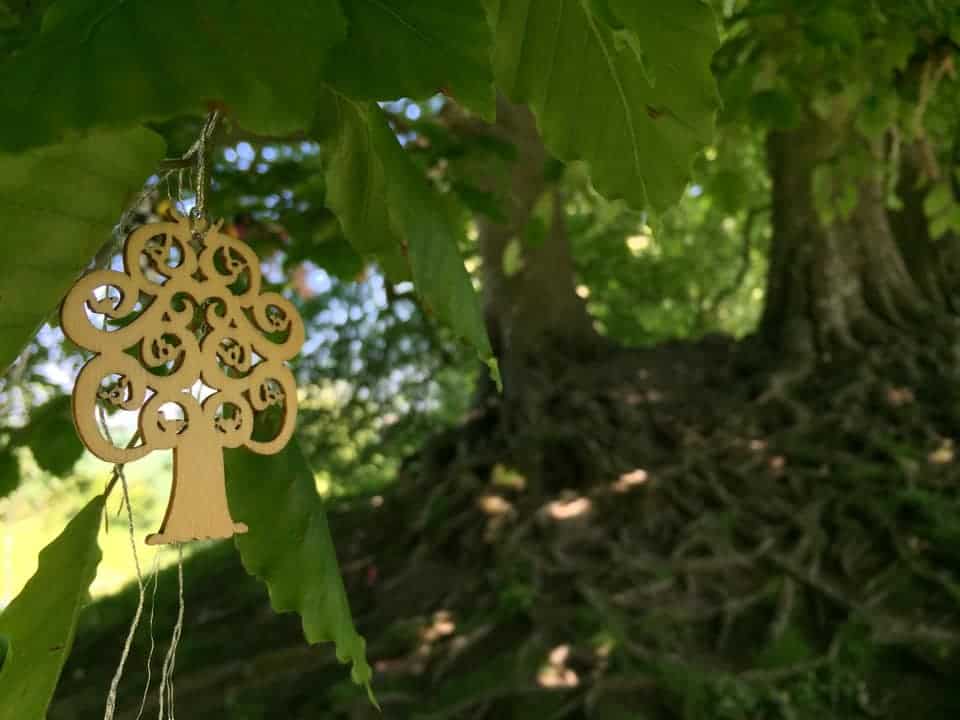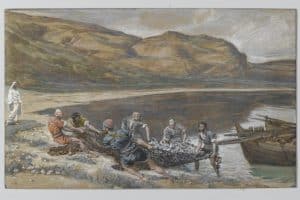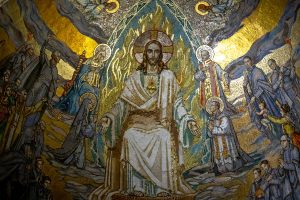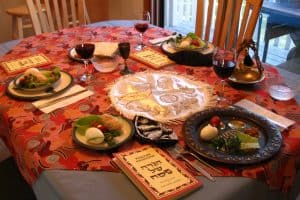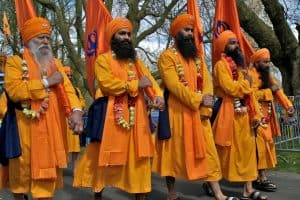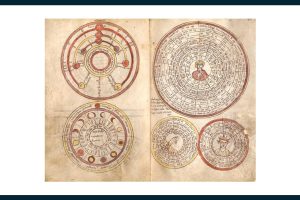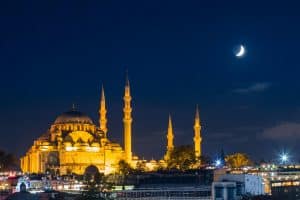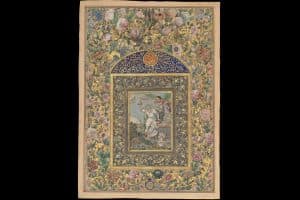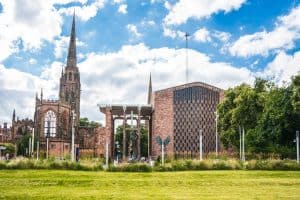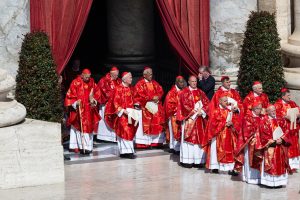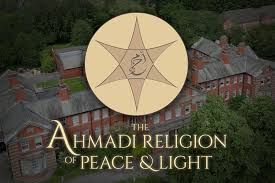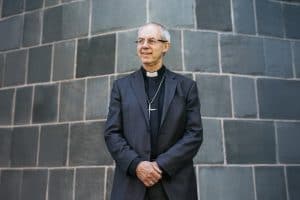By Jennifer Uzzell
Druidry is a contemporary movement that takes inspiration from the beliefs and practices of the religious leaders in Iron Age European society. Modern Druidry began in the 18th century during a revival of interest in ancient Druids, of which almost nothing is known with any historical certainty
How did Druidry begin?
Modern Druids take their inspiration from the religious class of Iron Age society in Europe. Almost nothing is known of the original ancient Druids, and what little we have from classical authors is contested.
There is no direct link between the ancient Druids and those who use the name today. One strand of classical sources describes the Druids as wise counsellors, judges, natural philosophers and scholars, and it is this image that inspires modern Druidry.
Fascination with the Druids was revived in the 18th century, largely inspired by early archaeological work by scholars such as William Stukeley, who believed that Avebury stone circle in Wiltshire had been built by Druids. This led to an association in popular culture between Druids and stone circles, particularly Stonehenge, that persists to this day.
The cultural interest in Druidry ultimately gave birth to three separate branches that use the name today but are largely unrelated to each other. These are:
- Masonic-type Druid Orders such as the Ancient Order of Druids
- The Welsh Bardic movement responsible for the annual National Eisteddfod, a celebration of the culture and language in Wales. It has sister movements in other Celtic nations and is a continuation of the revivalist tradition, but not connected to modern spiritual Druidry
- Religious or spiritual Druidry
Fraternal and cultural Druidry orders, dealing with social gathering, charity work and the bardic arts, do not concern themselves in any way with politics or religion. Winston Churchill and the Queen were, famously, initiated into Druid orders, but they were fraternal and cultural orders, respectively, and not the religious/spiritual orders with which this factsheet is concerned.
What is religious or spiritual Druidry?
A number of Druid orders in the modern world are religious or spiritual in nature, as well as many solitary practitioners who would identify as religious or spiritual Druids. Most, but by no means all of these, would identify as Pagan.
There are also many Druids who would see themselves as having dual belonging in Christianity, Buddhism, Wicca, and other traditions alongside their Druidry.
While modern Druids do not generally claim an unbroken line of tradition back to the ancient Druids, they are inspired by the image of the Druid as a natural philosopher, wise judge and peacemaker, and they seek to emulate these qualities in the modern world.
Is Druidry a religion?
This is a difficult question and there are many different opinions about it even within Druidry. Many Druids, with other Pagans, are suspicious of the term religion, as it has the implications of dogma and the restrictions of organised religion, with which many have had bad previous experiences. For this reason, many prefer the term spiritual.
Not all Druids believe in supernatural beings (such as God or gods) and the definition of religion has traditionally required this belief.
However, other broader possible definitions of religion may include Druidry. For example, Douglas Ezzy — an Australian sociologist of contemporary spirituality — defines a religious life as one lived with soul, facilitated through supportive relationships, ritual practices and drawing on symbolic resources such as myth and shared cultural understandings. By this definition, Druidry is certainly a religion.
Druidry is concerned with the same things that religion typically addresses: the nature of reality, the meaning of life, how to live a good life, the place of humanity in the world and what happens after death. It does not have scriptures, places of worship or a centralised authority, but it does concern itself with sacred story and myth and with ritual and ceremony.
It is perhaps best to say that Druidry is a religion for some Druids some of the time.
What is distinctive about Druidry?
Like many other forms of Paganism, Druidry is less concerned with beliefs than with practice. It has been described as a way of orienting oneself towards the world, and of being in active relationship with the earth, with other humans, with the fauna and flora of a particular landscape or ecosystem, and, for some, with gods, ancestors and spirits.
There are no fixed beliefs in Druidry and there is much variety between individual Druids, even those in a particular order. There are, however, some things that give Druidry an identity distinct from other forms of Paganism.
Like most Pagans, Druids tend to perform ceremonies in circles, particularly to celebrate the eight key festivals in the Wheel of the Year:
- Samhain (31 October)
- Winter Solstice (21 December)
- Imbolc (1 February)
- Spring Equinox (21 March)
- Beltane (1 May)
- Summer Solstice (21 June)
- Lughnasadh (1 August)
- Autumn Equinox (21 September)
Many, but by no means all, wear white robes, although modern Druidic robes can be very colourful. Druids are famous for the Summer Solstice celebrations at Stonehenge, which represent probably the most recognisable image of modern Druidry.
There was controversy in 1985 where police clashed with New Age travellers at Stonehenge at the Summer Solstice at what has become known as the Battle of the Beanfield. This led to everyone, including Druids, being banned from Stonehenge at the solstice. Many Druid groups campaigned for access to be restored, most visibly Arthur Uther Pendragon.
The Druids secured the right to return to Stonehenge for the solstice celebrations from English Heritage in 2000. Stonehenge is not the only site of importance, however, and Druids celebrate the festivals at Avebury and many other stone circles, as well as any suitable outside locations.
What do Druids believe?
There are as many beliefs about the divine as there are Druids. An increasing number of Druids are polytheists, believing in, and developing relationships with a number of gods and goddesses, most often drawn from what is known of Celtic deities, as well as from medieval mythological sources that many believe hold fragments of pre-Christian belief. These include the Welsh Mabinogi and Irish epics such as The Táin. Druids may also seek to develop relationships with local spirits of particular landscapes.
Another belief that is common in Druidry is animism. This is not necessarily defined as it was by 19th-century anthropologists as the belief that objects such as rocks and rivers have souls. Rather, many modern Druids adopt the academic Graham Harvey’s definition of animists as “people who recognise that the world is full of persons, only some of whom are human and that life is always lived in relationship with others”.
There are, however, Druids who believe in one god, understood either as a personal being who created the world, or as an energy that pervades the universe. Others recognise a god and goddess embodying the creative forces of the universe. Some worship only a goddess, who may be understood as nature herself, or as a personal creator. There are also a small but significant number of Druids who do not believe in any supernatural beings.
Many Druids, in common with other Pagans, also revere their ancestors as beings that they can draw on for inspiration, help and support. Ancestors in Druidry may be blood ancestors, but may also be ancestors of place — any human or, in some cases, any animal who has lived in the past in the landscape where you are placed, or of tradition.
This would include figures such as William Stukeley, Iolo Morganwg or Ross Nichols, who shaped Druidry as it exists today. Also in common with many other Pagans, Druids often feel a particular affinity with the natural world and many are actively involved in ecology, permaculture or environmental activism.
Do Druids believe in life after death?
Many Druids believe in the transmigration of the soul after death; a belief that is attributed to the ancient Druids by many classical authors. It is not clear whether reincarnation was seen as being in this world or in some form of other world.
Other Druids believe that after death they go to another realm, sometimes called Annwn, the Otherworld or the Summer Lands. This is a place of the ancestors, who are very important in Druidry.
Yet others, follow an idea called The Three Cauldrons, believing that a human is made up of three components. After death one may be reborn, one may rejoin the ancestors and one remain as a ghost or spirit or fade from existence completely. Some Druids do not believe in life after death. There is no single belief shared by all Druids.
How does mythology fit into Druidry?
Druidry has a great concern for story as a way of passing on truth and understanding about the world and understanding oneself. Becoming a storyteller is one of the bardic arts that Druids following the first of the three grades of membership in some of the orders are encouraged to develop.
The mythology of Britain, particularly the Four Branches of the Mabinogi — mythological stories from 12th and 13th-century Wales — figure strongly in the traditions.
Druidry is also concerned with the bardic arts of music and poetry. These may be in connection with the instruments and forms of the ancient past, or with more modern interpretations, but creativity is seen as a way of linking to Awen (inspiration), and so, for some, to the divine.
What is Awen?
Awen is an old Welsh word literally meaning something like “flowing”. It was developed in the writings of Iolo Morganwg to refer to creative or poetic inspiration. The concern with Awen is one of the most immediately recognisable aspects of modern religious or spiritual Druidry. Awen (pronounced almost as a mantra — Ah-ou-en) is chanted three times in many Druid ceremonies as a way of connecting to the spirit of inspiration and inviting it into one’s life.
For some Druids Awen is merely a convenient term for inspiration and creativity which they seek to bring into their lives. For others, it has almost divine qualities.
It is often associated with the story of the cauldron of Ceridwen in the Mabinogi, who may or may not be an ancient Welsh goddess, but she does seem to have been a patron of bards in medieval Wales. In the story, three drops of a magic potion from the cauldron, often identified with Awen, are consumed by a boy who goes on to become the greatest poet of Welsh history, Taliesin.
How is Druidry organised?
There are many Druids who practise alone and do not belong to any order. There are, however, a number of Druid orders operating in the UK. Each has a distinctive flavour to its Druidry. Some of the most well-known and influential include those below, although there are many others.
The Order of Bards, Ovates and Druids
The Order of Bards, Ovates and Druids (OBOD) was initially founded by Ross Nichols in 1964, but after his death in 1975 it entered a period of inactivity before being revived by Philip Carr-Gomm as a more overtly Pagan oriented organisation in 1988. It is the largest of the orders, having about 20,000 members in 50 countries. OBOD runs a distance-learning course, through which members can move through three grades, an idea originated by the Welsh writer and antiquarian, Iolo Morganwg. The grades are: Bard, concerned mostly with the development of the bardic arts; Ovate, concerned with herb craft, tree lore and divination; and Druid, concerned with philosophy and leadership. Members also receive guides and liturgy for conducting seasonal ceremonies. OBOD sponsors an academic article on a subject related to Druidry each year and also facilitates discussion between Druids and Hindus through the One Tree Gathering.
The British Druid Order
The British Druid Order (BDO) was established by Philip Shallcrass, also known as Greywolf, in 1979. Unlike the Order of Bards, Ovates and Druids, this is not directly descended from the fraternal and cultural Druid orders of the 18th and 19th centuries, and its flavour of Druidry is slightly different in that it tends to be more overtly polytheistic and shamanic.
It sees itself as trying to reconstruct for the modern world (so far as is possible) the ancient shamanic religion of Britain. Like the Order of Bards, Ovates and Druids, the British Druid Order offers a distance-learning course through which members can progress through the grades of Bard, Ovate and Druid.
The BDO was responsible for the opening ceremony of the 2012 Paralympics in London, bringing Druidry visibly into mainstream culture.
Its website says “BDO Druidry is a contemporary living spiritual tradition based on the earliest native spirituality of Britain and Europe of which any written record survives. Druidry developed during the European Iron Age that began almost 3,000 years ago, but grew out of an even earlier stratum of practice and belief. Contemporary pagan Druidry offers ways to reconnect with the cycles of life, the spirits of nature, our ancestors and their gods. Like all spiritual traditions, its ultimate goal is unity with the infinite.”
The Druid Network
The Druid Network (TDN) differs from the orders mentioned here in that in that it is not a teaching order and does not offer courses. It says: “The Druid Network aims, through connecting individuals and groups together, through co-ordinating efforts and initiative, and through actively interfacing with public bodies and the media, to inform, inspire and facilitate Druidry as a religion.”
TDN defines its Druidry very much as a religion and in 2010 gained acceptance as a charity by the Charity Commission as a religious body. This paved the way to Paganism being accepted by the Inter Faith Network.
TDN was established in 2003 by Emma Restall Orr (also known as Bobcat) as a way for the Druid orders to communicate and work together. Emma had previously been co-leader of BDO.
The Council of British Druid Orders
The Council of British Druid Orders was established in 1989, primarily to facilitate ceremonies at Stonehenge.
The Anglesey Druid Order
The Anglesey Druid Order (ADO) is led by Kristoffer Hughes. Unlike other orders it is tied to a particular sacred landscape and ceremonies are frequently conducted in Welsh. Membership is by attendance at courses run in Anglesey at weekends, and while there are grades of membership they do not correspond to the traditional Bard, Ovate and Druid. The order tends to promote a polytheistic understanding of Druidry and draws heavily on the Mabinogi for inspiration. Kristoffer Hughes writes extensively on the topic of Druidry and death.
Jenny Uzzell is a doctoral researcher at Durham University and education and youth manager at the Pagan Federation
Contacts
Jenny Blain, previously senior lecturer at Sheffield Hallam University
Professor Graham Harvey, Department of Religious Studies, the Open University
Professor Ronald E. Hutton, Department of History, Bristol University
Dr Suzanne Owen, Leeds Trinity University
Jennifer Uzzell, doctoral researcher, Durham University and Education and Youth Manager, Pagan Federation
Dr Sarah Harvey is senior research officer at Inform, an independent, educational charity based at King’s College London, which provides information about minority religious, spiritual and political movements
Further reading
Researching Paganisms, edited by Jenny Blain, Douglas Ezzy and Graham Harvey (2004)
Sacred Sites, Contested Rites/ Rights: Pagan Engagements with Archaeological Monuments by Jenny Blain and Robert Wallis (2007)
Sex, Death and Witchcraft: A Contemporary Pagan Festival by Douglas Ezzy (2014)
Animism: Respecting the Living World by Graham Harvey (2006)
Listening People, Speaking Earth: Contemporary Paganism by Graham Harvey (2006)
Blood and Mistletoe. The History of the Druids in Britain by Ronald Hutton (2009)
Contemporary Druidry: A Native Tradition? by Suzanne Owen (forthcoming)

